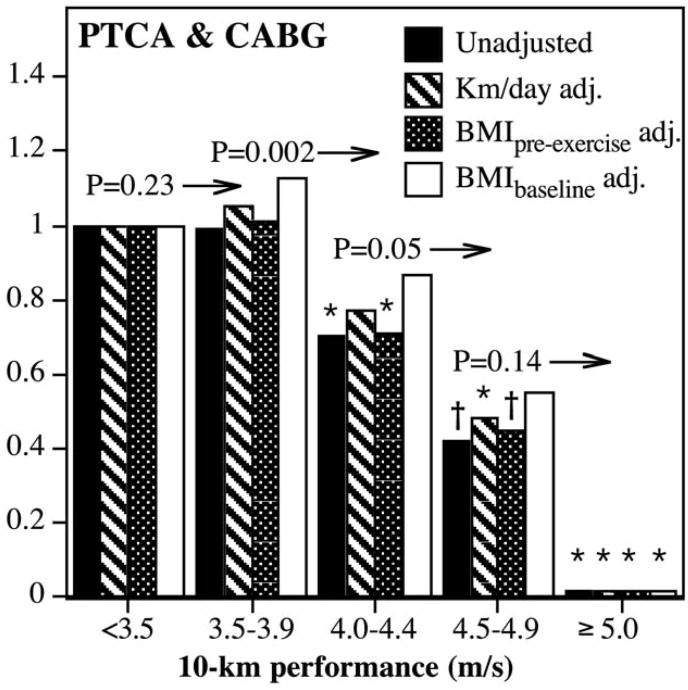Figure 2.
Hazard ratio from survival analyses of participant-reported revascularization procedures (percutaneous transluminal coronary angioplasty [PTCA] and coronary artery bypass grafting [CABG]) by cardiorespiratory fitness adjusted (adj.) for age, education, intakes of meat, fish, fruit and alcohol, aspirin use, and pack-years of cigarette use. Significance levels provided (above bars and to left of arrows) are relative to all faster 10-km performances (Figure 1). Significant differences relative to the least fit (slowest) runners are coded (*p <0.05; †p <0.01). Fitness categories were chosen to illustrate that risk decrease for revascularization procedures was due primarily to decreasing risk in the fittest men.

